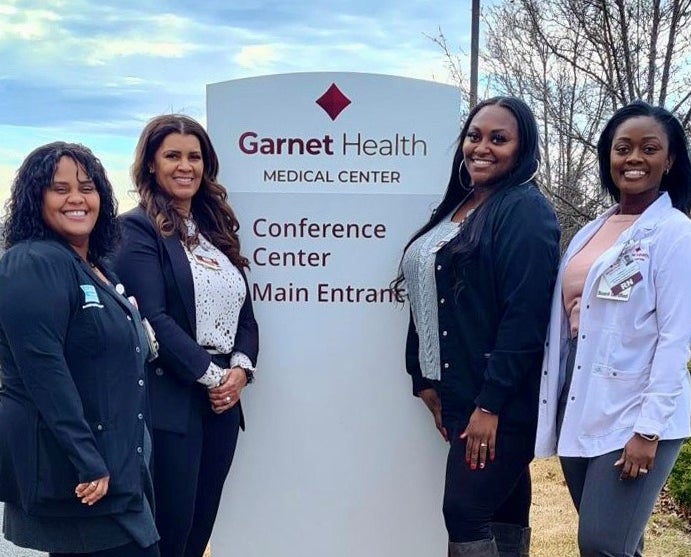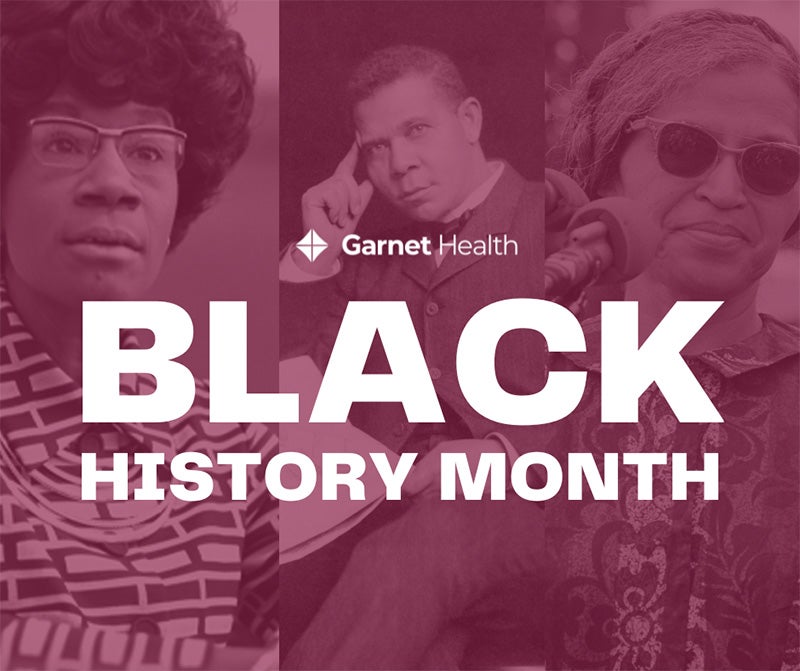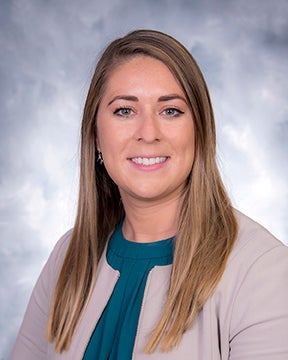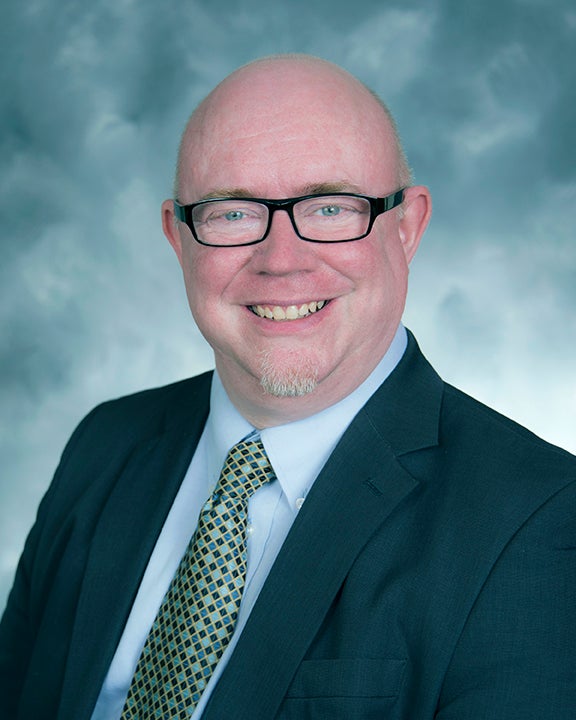Body
 Written By: Carley Salas, MS, RDN, CDN and Janet Klein, MS, RDN, CDN, CDCES
Written By: Carley Salas, MS, RDN, CDN and Janet Klein, MS, RDN, CDN, CDCES
The thought of having weight loss surgery is exciting, and the anticipation of all the positive changes that happen as a result can sometimes overshadow the reality of the after effects from the surgery. It is a good thing to think positively, while at the same time it is equally as important to be aware of and prepared for the realities of how things will be following the surgery. In other words, it’s very important to focus not only on the physical changes that occur with weight loss surgery, but be mindful of the psychological changes that come as well.
Having realistic expectations and preparing for different outcomes pre-operatively will ensure your success post-operatively. Some people think that having bariatric surgery will make the weight loss journey easy and therefore underestimate the real ongoing commitment that it takes. Bariatric surgery is a TREATMENT not a CURE for obesity. Once your BMI reaches the level of surgical candidacy, it is one of the MOST important tools in your toolbox to successfully reach a healthier weight and healthier you. However, making healthy food choices, exercising consistently, and taking care of your mental health are among the other important tools you’ll need to keep obesity in remission.
Start Making Changes
During your research on bariatric surgery, you may have heard some people say they had initial feelings of regret. This may happen when the realization of the necessary lifestyle changes truly sets in. People begin to grieve the loss of old eating behaviors, i.e. overindulging, which oftentimes served as a catharsis and distraction from dealing with underlying emotions pre-operatively, and the realization begins to sink in as they are confronted with the unhealthy relationship they had with food. This can happen when people do not give themselves enough time to truly reflect on their behaviors and begin to actively make changes prior to having bariatric surgery. We cannot stress the importance of this enough – begin working on improving your health habits, one step or goal at a time, as soon as you start the process to have bariatric surgery! The beginning can be challenging, but once you’ve reached the post-op phase and settled into your new healthy routine most of you share with us that you wish you had the surgery many years prior!
Eat Mindfully
Understand that your relationship with food is going to be different after surgery. Because the amount of food you can eat is very little, especially in the beginning, it’s imperative that the foods you are choosing are as nutritious as possible. You may begin to pay more attention to how food makes you feel, and gravitate towards foods that make you feel good and provides your body with nourishment instead of choosing foods solely because they taste good, or you have a craving for them. This is known as “mindful eating,” being mentally present when you are eating and putting thought into your food choices, as opposed to “mindless eating,” i.e., eating while distracted watching TV or playing a video game.
Learn Healthy Ways to Cope with Stress
Food has been a reliable source of comfort for many people who struggle with their weight, but to take control of emotional eating you will have to learn new skills to cope with stress. This takes practice, so be patient with yourself and start working on this before surgery. Try things like journaling, meditation, calling a supportive friend to vent, taking your dog for a walk, yoga, painting, taking a nap or going to bed earlier etc. instead of turning to food. Ask yourself what triggered the emotion and describe what you are feeling; anger, sadness, fear? What needs to change to make you feel better or resolve the problem? We’re human and all experience unpleasant feelings sometimes – the goal is to disconnect those feelings from food and find better ways to get through life’s difficult moments, ways that actually make you feel better in the long term, not just the immediate gratification that food brings because you enjoy the taste or texture in the short-term.
Seek Support
The entire process of bariatric surgery from beginning to end can be a long and challenging road, but it is well worth the effort. It requires many different doctor’s appointments, testing and screenings, nutrition education, and major lifestyle changes. If you or someone you know is going through this process, they need all the support and positivity to help get them to where they want to be.
It can be frustrating and discouraging if you do not have the support of those closest to you, especially when you are trying to do something positive for yourself. Having people in your corner to help you through this journey is definitely recommended. But remember, not everyone is going to make the same changes as you, or change at the same pace as you. There are many things your family/friends can do to help you feel supported; keep reading for a few tips and suggestions!
- Have them accompany you to your appointments and attend Bariatric Support Group meetings. The more they know about the procedure and the required lifestyle changes, the more they can support you. At Garnet Health Medical Center we offer support groups for pre and post-op patients together. All support groups are open to the general public as well. To find out the support group schedule and to register, go to www.garnethealth.org/events and search ‘bariatric support’.
- Openly communicate with your partner/family how you feel about the recommended lifestyle changes and how you would like to start to implement them, not just for you, but also to improve your entire family’s overall quality of life. Be an active listener and allow your partner/family to express their feelings, as they may not be ready to make any adjustments in lifestyle for themselves. Respect this, and be patient, as most partners/family members begin to come around once they see the transition and metamorphosis taking place in YOU!
- Plan and prepare meals together. This can help reduce stress or arguments related to meal selection and preparation. You don’t want to feel like you are the only one having to eat a certain way and the only one making healthy changes that are not always easy. Sit down as a family/couple and make a weekly grocery shopping list that includes healthy foods that everyone enjoys. Everyone can benefit from eating more vegetables, fruits, and lean proteins! Choose new recipes or healthier versions of some of your favorites. This is an excellent way for them to learn about the types of food you will be consuming in your new lifestyle. When they become savvy with the type of foods and portion sizes, they may just find themselves eating healthier and losing weight too!
- Educate them. Many people have incorrect preconceived ideas about what bariatric surgery is, and some look at it as risky or “the easy way out”. The benefits of bariatric surgery include improvements or resolution of metabolic and other medical conditions; i.e., high blood pressure, diabetes, sleep apnea, swelling and joint pain, infertility, depression/anxiety, and high cholesterol. It is about much more than one’s physical appearance. With the advancements in laparoscopic/robotic bariatric surgeries in recent years, the procedures are extremely safe, and by significantly improving or resolving other medical conditions such as those previously described, prolong life for many years and improve the overall quality of one’s life. There is a lot of excellent information on the bariatric surgery homepage at www.garnethealh.org/bariatric to understand more about the surgery and by sharing this bariatric blog post with your partner/family, they will come to respect the hard work and effort it takes and give you all the credit you deserve with this important life-changing decision.
- Give them specific examples of ways they can support you. In addition to emotional support, perhaps you would like support with grocery shopping, food preparation or commitment to an exercise partnership! Exercising is a very important factor in facilitating weight loss, muscle toning and contributes to an overall healthy lifestyle, and is also a big stress reliever! Other ideas include going for family walks, hikes, bike rides, throwing a Frisbee in the park, golfing, swimming etc! Being active together as a couple or family is a great way to bond and stay motivated (and have fun too!).
Tags:
Body
March is Women's History Month, a time to highlight and celebrate the many contributions women have made throughout history and present day. Women's History Month has been recognized in the United States since 1987. In this article, we want to honor trailblazers in healthcare. But first, a brief history of how this month came to be:
Origins of Women’s History Month
In the U.S., the origins of Women’s History Month date back to the 1840s, when human rights activists including Susan B. Anthony, Lucretia Mott and Elizabeth Cady Stanton—leaders of Women’s Suffrage—began working to secure equality and voting rights for women. The first National Women's Day was observed in New York City in 1908, and the first International Women’s Day followed in 1911. In March 1972, Title IX, which protects people from sex discrimination in federal education programs, was passed by Congress. But it wasn’t until 1978 that the National Women’s History Alliance spearheaded the movement for a National Women’s History Week to take place the week of March 8 (when International Women’s Day is observed).
In February 1980, President Jimmy Carter issued a presidential proclamation for National Women's History Week, calling on Americans to observe the week with ceremonies, activities and programs that recognized the achievements of women and their contributions to history.
In 1987, Congress passed a resolution designating March as Women's History Month, and it has been honored and observed every year since.
Honoring Women in Healthcare
While the theme for this year is Celebrating Women Who Tell Our Stories, we would like to take a moment to celebrate women who have made significant contributions in healthcare. Understanding we certainly cannot list them all, we hope these few we do mention will showcase how women have and continue to make lasting strides in the field of medicine.
Elizabeth Blackwell, MD, was the first woman to receive a medical degree. Born in 1821 near Bristol, England, Blackwell moved with her family to America in 1832, settling in Cincinnati, Ohio. Her inspiration to study medicine came from a dying friend, who told her that a female physician would have made her situation easier. At the time, there were only a few medical colleges—and none that allowed women to enroll. But Blackwell persevered and was eventually accepted at Geneva College in New York. (Although, it’s said that her acceptance letter was meant as a joke by the all-male student body.) Even while facing discrimination and subsequent obstacles, Blackwell graduated first in her class in 1849. She opened a clinic to treat poor women, and later two more: the New York Infirmary for Women and Children and a medical college in New York City, both focused on supporting women pursuing careers in medicine.
Alice Ball created the first effective treatment for leprosy. Born in Seattle, Washington, in 1892, she studied chemistry at the University of Washington and accepted a scholarship from the University of Hawaii, where she became the first woman and African American to receive a master’s degree. Her thesis caught the attention of Dr. Harry T. Hollmann, MD, who needed an assistant in his research for a treatment of leprosy. Ball developed a water-soluble, injectable form of chaulmoogra tree oil, which became known as the Ball Method—the most effective treatment for leprosy until the 1940s. Sadly, Ball died in 1924, and her vast contributions were not recognized until many years after her death.
Virginia Apgar, MD, developed the gold standard for determining the health of newborns. Born in Westfield, New Jersey, in 1909, Apgar attended Columbia University's College of Physicians and Surgeons (P&S), where was one of only nine women in a class of 90 students. She received her medical degree in 1933. Apgar became the first woman to head a division at Presbyterian Hospital (now New York-Presbyterian Hospital/Columbia University Medical Center), where she served as director of the new Division of Anesthesia within the Department of Surgery. Previously, she’d applied for the position of Chair for the Division of Anesthesiology but lost to a male colleague, so she turned her attention to research in obstetrical anesthesia (particularly, the effects of maternal anesthesia on the newborn). With the goal of reducing neonatal mortality rates, Apgar in 1952 developed a scoring system to evaluate the health status of newborns that was based on their heart rate, respiration, movement, irritability and color one minute after birth. “Apgar scores” became standard practice and are now performed on all children born in hospitals worldwide.
Audrey Evans, MD, is creator of Ronald McDonald Houses. Born in York, England, in 1925, and trained at the Royal College of Surgeons in Edinburgh, Scotland, Evans came to the United States in 1953 as a Fulbright Fellow at Boston Children's Hospital. She was appointed head of the hematology-oncology unit at University of Chicago Clinics in 1964. Four years later, she began managing the children’s cancer center at Children's Hospital of Philadelphia (CHOP). During her time there, Evans focused on research and treatments of childhood cancers, particularly neuroblastoma. In 1971, she developed the Evans staging system. But Evans may be best known for her role in creating the first Ronald McDonald House in Philadelphia in 1974, a facility that allowed families to stay close to the hospital where their children were being treated. Today, there are more than 360 Ronald McDonald Houses worldwide.
Patricia Goldman-Rakic, PhD, developed insight into the brain and memory. Born in 1937 in Salem, Massachusetts, Goldman-Rakic grew up in Peabody, where she attended Peabody High School before moving to Poughkeepsie, New York, to study experimental psychology at Vassar College. She earned a bachelor’s in neurobiology in 1950 and a PhD from University of California, Los Angeles, in 1963. Goldman-Rakic began her career in research at the National Institute of Mental Health, where she developed a biological map of the frontal lobe. Her detailed findings in the structure of the prefrontal cortex were pivotal to a greater understanding of the brain’s operations and shed light on working memory. It was this knowledge that led to insight into diseases such as Alzheimer’s, cerebral palsy, Parkinson’s and schizophrenia. Her research revealed that cells within the prefrontal cortex are dedicated to specific memory and furthered the study of memory loss and how we think about the brain’s development. Goldman-Rakic went on to become one of the first female tenured professors of neuroscience, both at Yale and at the National Institute of Mental Health, before her untimely death in 2003.
As we celebrate Women's History Month, we honor the many women who have helped shape our world and who continue to make a difference today. And to all women devoting their lives to helping others by choosing a career in healthcare, we thank you.
Body
 As part of Black History Month, the Orange County Department of Health spotlighted four Garnet Health Medical Center Nurses to show off some of their accomplishments in keeping the residents of Orange County safe!
As part of Black History Month, the Orange County Department of Health spotlighted four Garnet Health Medical Center Nurses to show off some of their accomplishments in keeping the residents of Orange County safe!
Magalie “Maggie” Jean-Francois, RN, BSN, CNN, Hemodialysis Unit Manager
Garnet Health Medical Center
Maggie manages the Hemodialysis Unit at Garnet Health Medical Center, providing inpatient hemodialysis treatments and education to our renal patients. She also serves as the Nurse Leader Advisor for the Community Health Committee which is currently building the Food Farmacy program for food insecure inpatients. The program will provide three days of food to patients being discharged and who are food insecure. The Community Committee is also collaborating with Orange County Department of Health and other community stakeholders in reaching out to our highest risk population as well as other community members on STI’s awareness and resources. I’m proud to be among the Garnet Health staff and community leaders who are committed to addressing the community social determinants of health.
Maggie has over 18 years of nursing experience and is currently in obtaining her Masters in Public Health Nursing. “I will continue my passion of working closely with the community that I serve,” says Maggie.
Nicole Sewell, MSN, RN, CMSRN, NE-BC, Interim Chief Nursing Officer/Vice President Patient Care Services
Garnet Health Medical Center
Nicole is the Interim CNO at Garnet Health Medical Center. As the CNO, she focuses on both nursing leadership and organizational administration. A CNO’s responsibilities are typically related to setting patient care standards, establishing processes and protocols for achieving those standards, and managing the work of nurses who care for patients. She has been in the nursing profession for more than 35 years and worked in various roles at the bedside and management. “I am most proud that I work in the community where I was born and raised and have strong roots here,” says Nicole. Her passion is helping our community and those in need. Nicole participates in coordination of food drives and supports all initiatives involving the social determinants of health.
At Garnet Health, we developed a system in which our food insecure patients are properly screened during admission intake process and are identified early so that we may provide a list of food resources once they are discharged. Additionally, we received a grant that sponsored some of our nurses to educate their colleagues on the importance of food insecurity. This led to a few who were selected to participate in a national poster presentation and conference in Florida.
“I am proud to lead within an organization that understands the need to address other community concerns. We deliver quality healthcare but we do so much more,” states Nicole. The Food Farmacy program is an interdisciplinary project aimed at helping patients discharged from the hospital receive the resources they need to live a better life.
Teresa Bryant, RN, BSN, Administrative Director of Nursing
Garnet Health Medical Center
Teresa provides staff supervision to ensure effective overall operations of the nursing department as well as compliance with the established standards of care. She works to problem solve at the administrative level in conjunction with hospital administration. She stands ready to respond to hospital emergencies while overseeing patient care delivery, staffing and processes.
Teresa has many achievements to be proud of.
Candidate for 1199s Nurse Leader at Garnet Health, January 2023
Worldwide Leaders in Healthcare: Top Nurse in Oneonta, NY, March 2015
- Certificate of Excellence for Commitment to the Bassett Mentoring Program, March 2015
- Service Quality Academy Awards: Service Artist to Watch Award, February 2015
- Community Service Leader Award, May 2012
- Student of the Year Award for Associate’s Degree, April 2012
- State University of New York Chancellor’s Award for Student Excellence, March 2012
Lashay Houston BSN, RN, CMSRN, Administrative Director of Nursing
Garnet Health Medical Center
Lashay has oversight of patient flow, nursing care, and staffing. She received her TNCC and TCAR certifications during her 5year stretch at Garnet Health as a critical care nurse before being promoted to leadership in 2021. Lashay obtained her Bachelor’s degree in 2018 and is currently working on her Master’s degree. She has a goal of soon obtaining a Doctorate in Nursing. Leadership and community involvement have proven to be a passion of hers as she strives to help improve her community by staying involved. Lashay has been a nursing clinical instructor at SUNY Orange for the past 2 years teaching new nurses proper clinical application in an ICU setting. In her free time, Lashay is an assistant varsity cheerleading coach at Middletown High School. Something she’s enjoyed for the last 5 years. Her goal is to be an example to other young African American woman while advancing in her career.
Tags:
Body
Garnet Health, which includes Garnet Health Medical Center, Garnet Health Medical Center – Catskills, Garnet Health Doctors, Garnet Health Urgent Care, Garnet Health Foundation and Garnet Health Foundation – Catskills, recently announced the promotion of the following individuals.

Moira Mencher has been promoted to director of planning and community relations. Mencher will oversee all certificate of need preparation, strategic planning, data collection and analysis, special projects, government relations and regulatory compliance. She will continue to grow Garnet Health’s community health program and drive health equity and physician relations. Mencher joined Garnet Health in 2019 as a physician liaison and shortly thereafter began to lead, grow and expand Garnet Health’s community presence.

Cari McGinnis has been promoted to IT manager, Revenue Cycle and Health Information Management (HIM). McGinnis has been with the organization 24 years, most recently as a financial analyst in IT. Prior to that, she was an IT liaison to patient accounting at Arden Hill Hospital. In her new role, McGinnis will oversee both the IT revenue cycle and HIM analysts for Garnet Health.

Shawn Springer has been promoted to administrator of technical services. Springer has been with the organization for eight years. He started as a senior network engineer before taking the position of director of technical services. In his new role, Springer has systemwide oversight of the IT network, security, help desk and infrastructure teams, as well as the telecommunications department.
For more information about career opportunities at Garnet Health, visit careers.garnethealth.org
Body

Garnet Health System is pleased to announce that Andrey Dovletov, CPA, CHC, has joined the organization as corporate compliance officer and director of audit and HIPAA privacy.
Mr. Dovletov is responsible for all aspects of daily compliance and for ensuring privacy laws, regulations, standards and ethical practices within the organization are followed. He is also responsible for the overall corporate compliance and audit program for the health system.
“A position such as this requires attention to detail and a remarkable understanding of compliance regulations and privacy policies,” states Jerry Dunlavey, interim president and CEO, Garnet Health. “We are confident Andrey’s extensive experience will help ensure we continue to conduct our business with the highest level of honesty and integrity, and remain in full compliance with healthcare industry laws and regulations.”
Prior to joining Garnet Health, Mr. Dovletov was the director of internal audit at Richmond University Medical Center. He has also held leadership roles in compliance at St. John’s Episcopal Hospital and CenterLight Health System.
Mr. Doveltov has a bachelor’s degree in finance and accounting, and a master’s in public health policy. He is a certified public accountant and is certified in healthcare compliance.
For more information about career opportunities at Garnet Health, visit careers.garnethealth.org.
Body
If you are a “Thunderhead,” you already know. If you’re not, tune in! Garnet Health Interim President and CEO Jerry Dunlavey will join the popular Thunder 102 morning show, Ciliberto & Friends — whose listeners are known as “Thunderheads” — as a guest host once a month throughout 2023.
On his first appearance, Jerry took the opportunity to share a little about himself and a lot about Garnet Health and its commitment to the residents of Sullivan County.
Jerry has lived in Goshen, New York, for 20 years and says he is “excited to be back out in the community” meeting residents, leaders and legislators. When asked about Garnet Health Medical Center – Catskills’ financial health, Jerry was forthcoming and honest. He explained the many challenges faced not only by our health system but also by those around the country. Last year (2022) was a particularly challenging time due to a decrease in patient volume and revenue, as well as an increase in costs from inflation and COVID-19-related factors. This all makes 2023 a pivotal year — one for which Garnet Health already has a plan in place to help us maintain our commitment and promise to Sullivan County.
Jerry shared with the Thunder 102 audience that Garnet Health was able to take significant measures to reduce anticipated losses by nearly 50%, all while improving patient access and welcoming two new full-time doctors — a gastroenterologist and a general surgeon.
“And we’re not slowing down,” Jerry explained. He went on to share that Garnet Health has hired two new psychiatrists and talked about our commitment to continued growth and bringing more needed doctors to the region. He also announced a $10.5 million grant that Garnet Health Medical Center – Catskills received from the Department of Health, which will be dedicated to recruiting and retaining staff.
Jerry teased some special guests who will join him for future episodes and shared a touching cardiac story that exemplifies the expertise and quality care right here in our region.
In his parting words, he said, “Garnet Health Medical Center – Catskills is 100% committed to serving the healthcare needs of [Sullivan County], now and into the future.”
You can listen to the full podcast with Jerry’s debut cohosting gig here. And tune in on the fourth Tuesday of every month from 7:00 to 9:00 a.m. to hear more from Jerry about Garnet Health Medical Center – Catskills and all it has to offer.
Body
So you finally met your goal weight after having bariatric surgery – congratulations! All of your hard work like exercising regularly, getting enough sleep, drinking plenty of fluids, and following the diet plan has paid off. Now that you’ve crossed the finish line, you don’t have to worry about any of that stuff anymore, right? WRONG! There is no “finish line” when it comes to health and wellness. It is something that is always being worked on. Believe it or not, not much changes after reaching your goal weight. You are going to continue making those healthy choices every day that have gotten you to where you wanted to be.
Maintenance phase is when you are maintaining the weight that you have lost. It is normal for there to be a little range and not stay at one static number, say maintaining between 155-160lbs for example. There is no way to know exactly how much weight each person will lose, but following the recommended diet plan and lifestyle changes will help with successful weight loss and long-term maintenance. Studies show that about 90% of bariatric surgery patients lose 50% or more of their excess body weight and are able to maintain a long-term weight loss1.
During maintenance phase, you will still continue focusing on meeting the 60-80 gram protein goal, but that amount may increase depending on your level of physical activity. Remember to choose lean sources of protein so you do not consume excess calories from fat. Lean protein sources include low fat dairy, skinless chicken/turkey breast, tofu, seafood, eggs, and certain cuts of beef and pork. You also want to include 2-3 servings of vegetables and 1 serving of fruit a day, if possible.
You can begin to incorporate small amounts of complex carbohydrates, especially if you are doing moderate-high intensity exercise regularly as our bodies do need some carbohydrates for fuel. Complex carbohydrates are those that contain fiber, vitamins, and minerals and digest slowly, keeping you full longer. Examples of complex carbohydrates include fruit, beans, potatoes, squash, oats, barley, quinoa, whole wheat bread, and brown rice. Complex carbohydrates can also help reduce constipation, which is common after bariatric surgery.
It’s best to avoid unhealthy sources of carbohydrates that can cause spikes in blood sugar, lead to weight gain, heart disease, and dumping syndrome. Examples of these foods include soda, juice, or other sugary beverages, candy, cookies, pastries, frosting, muffins, ice cream, chocolate, etc.
When it comes to fats, the source matters as there are some types of fat that are considered heart healthy, and some types of fats that can contribute to high cholesterol and heart disease. Saturated and trans fats are the unhealthy types of fats that should be limited in the diet.
Saturated fats are found in:
- ice cream, cheese, heavy cream, red meat, butter, whole milk, poultry skin, coconut oil, and palm oil
Trans fats are found in:
- highly processed foods like chicken nuggets, pastries, onion rings, cake, cookies, chips, shortening, and stick margarine
Unsaturated fats are the healthier type of fats and are found in:
- nuts, seeds, avocados, olives & olive oil, and some seafood
Here’s a sample of what a day might look like during maintenance phase, depending on how far out from surgery you are. (You may or may not be able to eat the amounts listed in this example, depending on when you meet your goal weight.)
Breakfast:
- 2 scrambled eggs, 1 thin slice whole wheat toast with peanut butter
22oz water or sugar free beverages between breakfast and lunch
Lunch:
- 3oz chicken breast with 2 Tbsp. sugar free BBQ sauce, 2-3oz steamed broccoli
22oz water or sugar free beverages between lunch and dinner
Snack:
- low fat cheese stick, small apple
Dinner:
- 3oz salmon, 2oz cooked carrots, 1-2oz. roasted potatoes
22oz water or sugar free beverages between meals/snacks
Snack:
Sugar free popsicle or low fat, low sugar Greek yogurt
Fluid Total: 66 ounces
Protein Total: about 88 grams
So you’ve been given a protein goal to shoot for, but what about the other two macronutrients that make up food, carbohydrates and fats? This is a question I often get asked as patients get further out from their surgery and are paying more attention to what they are eating, increasing their physical activity, and reading nutrition labels. The answer to this question is a bit complex, as there is a lot of variance from person to person. Someone who is not doing anything beyond a 20 minute walk a couple times a week does not need the same number of calories or carbohydrates as someone who is doing a combination of strength training and cardio exercise for 45-60 minutes 5 times a week. Specifics on these numbers is something that can be discussed with your dietitian during a post-op appointment, that way it is more tailored to your individual needs. Check out the free app Baritastic to get familiar with logging your dietary intake if you want to learn more!
Reference:
1. https://www.uclahealth.org/comet/endoscopic-suturing-for-weight-gain-after-bariatric-surgery
Tags:
Body
 Black History Month occurs each February and is a time to learn about, reflect and honor the achievements of African Americans and their pivotal role in United States history. Here’s a brief background about the origins of Black History Month and how it came to be celebrated this time of year.
Black History Month occurs each February and is a time to learn about, reflect and honor the achievements of African Americans and their pivotal role in United States history. Here’s a brief background about the origins of Black History Month and how it came to be celebrated this time of year.
How It Started
We must go back to 1926, when Carter G. Woodson, PhD, who cofounded the Association for the Study of African American Life and History (ASALH), first established Negro History Week during the second week of February. Woodson’s intention was to bring the Black experience to America’s attention, using the week to springboard conversations and encourage local schools and communities to organize clubs, performances and other events.
While Negro History Week became recognized throughout the country over the following decades, it wasn’t until the mid- to late-1960s, during the height of the civil rights movement, when college students began demanding courses on African American history as well as the formation of Black Studies Departments at their schools. As a result, Negro History Week evolved into an expanded celebration—Black History Month—on many college campuses. Finally, in 1976, according to History.com, during the bicentennial celebrations, President Gerald Ford officially recognized Black History Month on the national level and urged all Americans to “honor the too-often neglected accomplishments of Black Americans in every area of endeavor throughout our history.”
But Why February?
Woodson chose to celebrate Negro History Week in February to honor and highlight the accomplishments of two important historical figures who have February birthdays.
The first was 16th U.S. president, Abraham Lincoln, who fought to preserve the Union during the U.S. Civil War and was influential in bringing about the emancipation of slaves. The other was Frederick Douglass, a former slave who became a prominent leader in the abolitionist movement, which fought to end slavery.
Honoring Achievements of Black Americans in Healthcare
There are many Black Americans who have greatly impacted and advanced healthcare. Here we highlight just three:
Charles Drew, MD, CM, was considered Father of the Blood Bank and served as its first director. Drew became interested in transfusion medicine during his time in medical school in Montreal, Canada. After winning a fellowship to train at Presbyterian Hospital, he continued his research while also earning his doctorate at Columbia. Drew’s expertise in blood storage and transfusions led to his appointment as head of the Blood for Britain Project during World War II, which pioneered a method that allowed blood to be stored for long periods of time and used in transfusions. This program became the model for the Red Cross Blood Bank, and in 1941, Drew was named its first director. Among the doctor’s innovations at the Red Cross was the bloodmobile—a mobile blood donation truck with refrigerators. Sadly, Drew resigned a year later after the Red Cross announced they would segregate white and black donors.
Henrietta Lacks unknowingly became the source of the first immortalized human cell line in 1951, when cancer cells were biopsied from her during treatment for cervical cancer. These cancer cells were cultured and became known as the HeLa cell line, which is still widely used for medical research. Lacks died in 1951 from cervical cancer, but her HeLa cells continued to be used for research into vaccines, cancer, AIDS, gene mapping and many other areas of medicine. Lacks’ family was not made aware of the HeLa cell line until 1975, and neither Lacks nor her family were compensated for their extraction or use. Their use continues to prompt conversation and controversy about privacy and patients’ rights.
Vivien T. Thomas, LLD, Instructor of Surgery at Johns Hopkins Hospital, developed the surgical procedure to treat what was then called “blue baby syndrome,” now known as cyanotic heart disease. With only a high school education, Thomas first secured a job as a surgical research assistant in 1930. He eventually rose above the challenges of institutional racism and poverty to advance his studies and become a pioneer in cardiac surgery. Thomas was only paid a janitorial salary and was not included in official articles about the procedure he developed. In 1976, Johns Hopkins University finally presented him with an honorary doctorate, and he was appointed to the faculty of the School of Medicine as an instructor of surgery.
Garnet Health’s Commitment to the Community
Garnet Health recognizes that diversity and inclusion are multifaceted issues and that we need to address them holistically to better engage and support all underrepresented groups within our community. To do this, we believe we also need to address honestly and head-on the concerns and needs of our diverse employees and our community, as well as continue to increase equity and inclusion for all.
As we start February—Black History Month—we reaffirm our commitment to diversity, equity and inclusion, and pledge to deliver excellent patient care and create equitable outcomes for our patients, community and employees.



